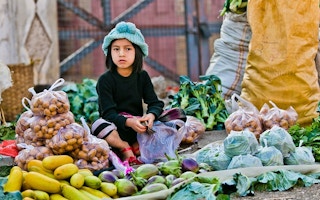The report, “What makes urban food policy happen?”, features case studies from five cities on four continents.
According to the authors, there are many nutrition-related challenges that municipalities around the world can tackle, from obesity to minimisation of food waste. Even developed cities are plagued with food deserts where fast food and unhealthy snacks are the main choices available.
National governments have long been a dominant force in shaping food policy, but that trend is changing, the authors explain. Today, hundreds of municipalities worldwide are taking a lead role in the provision of nutritious options for low-income, neglected neighbourhoods.
Universal access to healthier choices dovetails with efforts by cities to implement the Sustainable Development Goals agreed to by all 193 nations represented at the UN, particularly Goal 2 (related to hunger, food security, nutrition and agriculture) and Goal 12 (related to consumption and production patterns).
Here are some insights from the five case studies:
- Trailblazing an approach: Belo Horizonte, Brazil, pioneered this niche when it created a dedicated food agency — the Secretariat for Food and Nutrition Security — in 1992. The goal: to foster citywide access to high-quality, healthy and safe food.
- Welcoming small farms: Two cities a world apart encourage and promote small farms within their borders. For decades, Nairobi, Kenya, opposed urban agriculture and sought to shutter small plots cultivated by the poor. The city reversed course with 2015 legislation that seeks to regulate and support this practice. Likewise, Detroit is turning its decades-long population loss into an asset. With many vacant lots ripe to be repurposed for agriculture, Detroit adopted a 2013 ordinance that grants the municipality jurisdiction over urban farms. The ordinance was the byproduct of tense negotiations with state authorities and farming interests.
- Preventing child obesity: Amsterdam makes combatting childhood obesity, especially among poor and immigrant families, a high priority across its city bureaucracy. All agencies include anti-obesity strategies in their policy and planning efforts.
- Promoting good governance: A ten-year plan for the Toronto region promotes collaboration among seven Canadian municipalities on food- and farm-related issues. The Golden Horseshoe Food and Farming Action Plan also seeks to strengthen urban-rural alliances and spur innovative governance of complex food systems.
The report urges city leaders to make the most of the limited resources they have. That means maximising tight budgets and leveraging what might be tenuous authority to achieve objectives.
It also may mean falling back on existing services rather than starting new ones from scratch.
[See: How São Paulo is tackling poverty and urban sprawl by bolstering farming]
“First and foremost,” the report urges, look “at the services that the city already delivers to see how the food policy can be incorporated for little additional cost by changing working practices.”
While cities are making progress, the report says cities must “become more innovative and ambitious” about lowering food costs, boosting the availability of healthy options and enabling food production close to home.
The report was presented at the EAT Stockholm Food Forum, a two-day conclave held in mid-June. The event explored the transformation of food systems to address climate change, sustainable development and health issues.
Click here for the executive summary and here for the full report.
This story was published with permission from Citiscope, a non-profit news outlet that covers innovations in cities around the world. More at Citiscope.org










